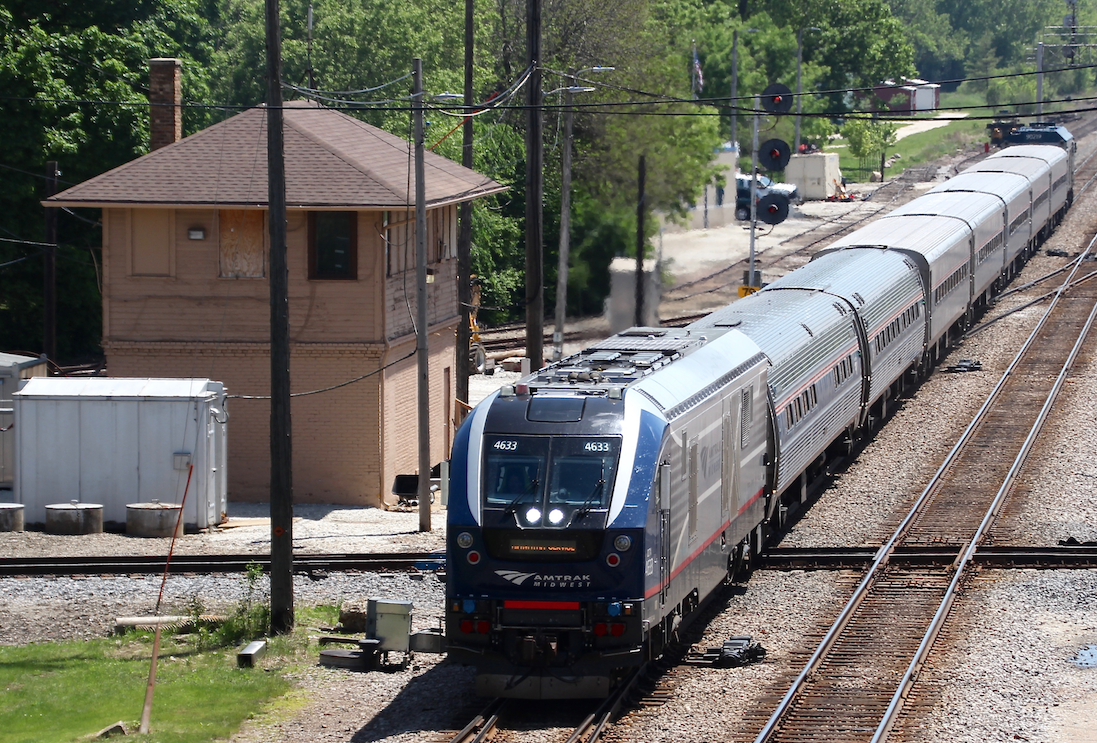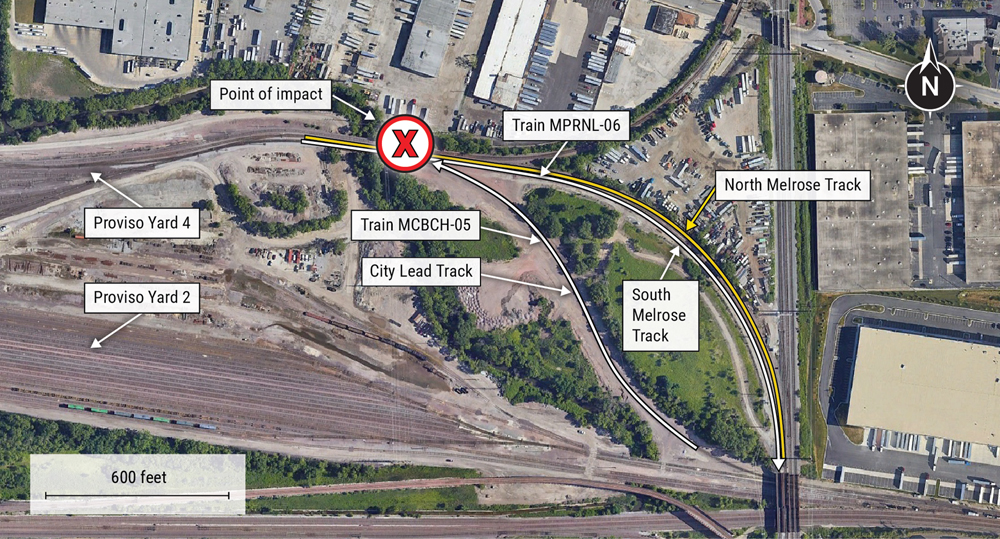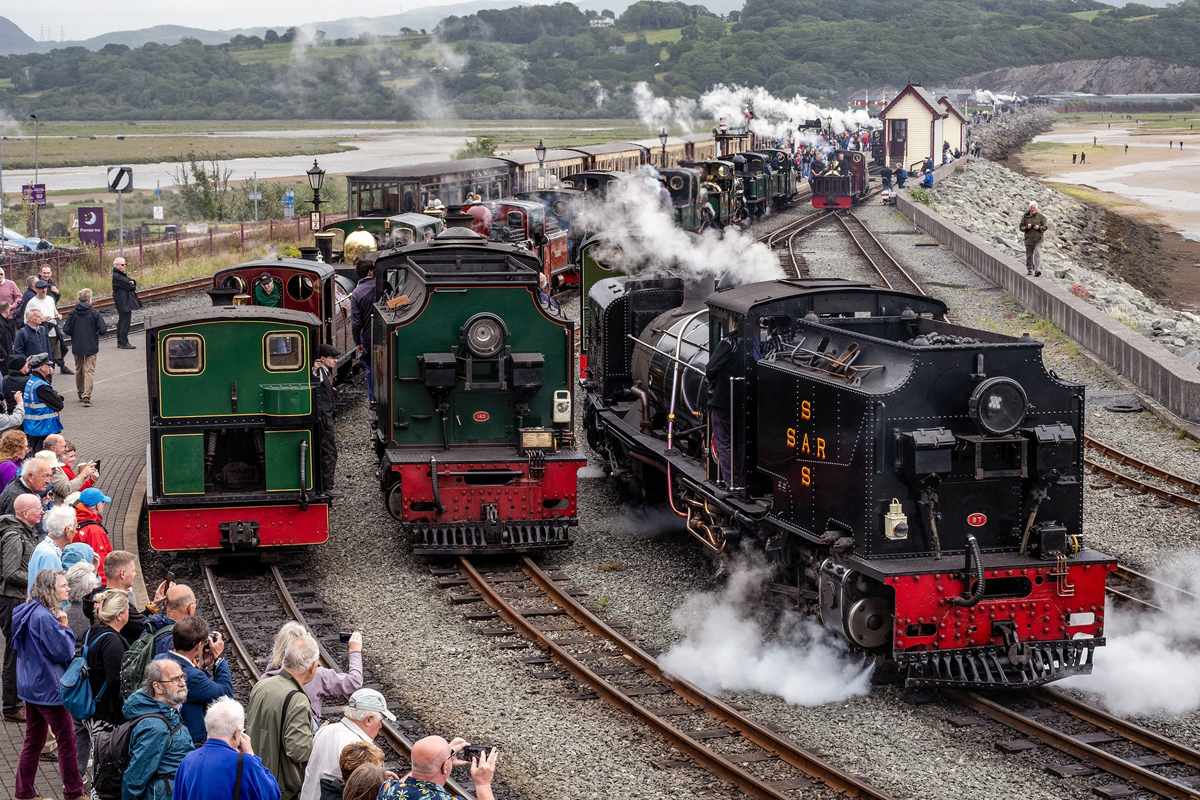In a Wednesday news conference at the Milwaukee Intermodal Station, the Milwaukee Journal-Sentinel reported that Arun Rao, passenger rail implementation manager for the state department of transportation, said an additional round trip would be added in the next three years, with two more in the two following years. That would create a total of 10 daily round trips.
Hopes of adding those trains had been slowed by opposition in some Chicago suburbs to related infrastructure projects, which had led Illinois officials to withdraw their support for new sidings in Glenview and Lake Forest, Ill.
But Craig Thompson, secretary-designee for the Wisconsin Department of Transportation, told BizTimes Milwaukee it should be possible to add to two trips based solely on improvements in Wisconsin.
“We believe we can get to nine round trips just through the things we know we can do on our side,” Thompson said. “Getting to the tenth round trip daily is when we’re going to have to really work with [Illinois] and figure out our options.”
Those improvements include a bypass that would allow freight trains to avoid the downtown Milwaukee station and a second platform at the Mitchell Airport station. The airport station project has already received federal funding. The state has committed $35 million in funding toward the Hiawatha effort in its 2019 to 2021 budget.
The Racine Journal-Times reported that the Wisconsin transportation department is completing an analysis of the infrastructure improvements needed on the Canadian Pacific- and Metra-owned route, then will work with those railroads and the Illinois Department of Transportation to complete those improvements.
Even after Illinois officials withdrew support for the sidings, they said they were still committed to expanding service, a commitment Thompson reaffirmed Wednesday.















glad to hear this, rode Hiawatha to Milwaukee last Nov on way to Trainfest and conductors all said they needed more trains as they were packed.
The suggestion to double track the New Line was interesting, in that the New line WAS originally double track.
The Airline is gone, but trains never had to use it to get around the depot. The Frt lead from KK Bridge through the yard and back to the main at Cutoff is, I think, still in place.
True, If Illinois cant do it bcuz of opposition of Idiots who purchase homes next to tracks & airports, well then Wisconsin can do it, Thumbs Up Badgers!!!
I was Born & raised in Chicago, Chicago NOT the burbs, we always knew them folks were snobs, arrogant jerks & “we’re better than you city dwellers” Ahos!!!!
RICHARD – Your post regarding diverting CP Rail freights onto UP is not at all far fetched. At one time (and who knows the future?) CP and UP were considered possible merger partners – which has led me to wonder in idle moments what that could lead to in Kenosha County. In an earlier day, CNW was looking at picking up MILW, same issue.
A long term, albeit radical, solution to what will be increasing capacity issues on the CM main (Hiawatha Corridor) would be its conversion to passenger only use, with ownership by some entity and CP rail freight handled on the CN (Soo) and/or UP (C&NW).
Re: However, I believe Mr.Landey is trying to say that even if all Hiawatha riders drove their cars the effect on 41-94 would be minimal
Of course it is “minimal”. How COULD 3 trains or 6 trains have any effect on 41-91.
(As Larry W pointed out) The real question should be: what would a MODERN non-HSR European level of service look like; and that is NOT going to be done by comparing traffic counts on 41-91 between Chicago and Milwaukee. That’s POINTLESS. Car’s are traveling on that section of highway that are NOT related to the Chicago – Milwaukee corridor. What should be address is ONLY following:
Could a good Chicago Milwaukee corridor prevent the highway engineer from (gleefully) widening 41-91 and (gleefully) destroying more peasants hovels in the process. THAT’S IT. Nothing else matters. Comparing “car trips” is pointless. Preventing the destruction of peasant hovels IS important.
All a good train system should be asked to do is move people in congested areas that OTHERWISE would have to drive. More driving causes more traffic. More traffic cause more congestion. More congestion causes highway engineers to do what highway engineers have done for decades: gleefully destroy housing. It’s cheap, fast, and keeps the loot flowing.
It occurred to me that maybe Illinois could engineer an alternative solution to the new sidings. Since most CP freights leave the traditional MILW Rd line at Techny to go around O’Hare airport on CNW (UP), why not add capacity (e.g. new sidings, DT, whatever) to UP’s “New Line” and make a new connection around the Pleasant Prarie Power Plant where CP and UP are within a half-mile of each other? This would leave most of the CP for passenger traffic, or at least provide routing options — Of course, “options” aren’t a fluid thing given crew districts, familiarization, and two separate railroads. Maybe even directional running would solve the problem, you’d basically get three-main track on the middle 50 miles of CHI and MKE.
An important dimension of the analysis is missing below — that of time, AKA short-term versus long-term modal choice. Right now the impact is hardly measurable. But does anyone doubt that NE corridor rail service has had an impact on both highway and air congestion between major city pairs? Over time, service frequency, vehicle ownership choices and the ability to afford cars may impact CHI-MKE travel to the point where there is a measurable impact on corridor auto traffic and/or projected capacity requirements. Just sayin’.
Mr. Pratt: You are correct. However, I believe Mr.Landey is trying to say that even if all Hiawatha riders drove their cars the effect on 41-94 would be minimal.
Yes, but they are not driving their cars!
Being very familiar with the Mitchell Airport Amtrak station, there have been changes that make me question if the second platform is needed. CP now runs longer trains with PTC, which means less trains, meaning less conflicts with the Hiawatha.
Just south of the airport depot there is a siding, that has trouble handling these longer southbound trains. So the last 10-15 cars stick out on the west main right in front of the depot. If they would extend the siding about 1,200′, that would clear up an issue. I believe there is enough room for 3 tracks under the airport hwy ramp bridge. It would be far cheaper to extend the siding than build another platform with elevators, etc.
It is very rare that I see both the Hiawatha & a freight passing the depot at the same time. In addition, while CP primarily uses the west track, I have seen them use the east track also during the day when the Hiawatha’s are running. Likewise if the east track is under maintenance, Amtrak can stop on the west track, but it isn’t very convenient as passengers have to cross the east track at a pedestrian crossing on the far north end of the platform. If they extended the siding as stated, a CP freight could get past the stopped Amtrak train when they use the west track while the east track is out of service.
CHARLES: By your statements, you obviously live in the Milw area. I would be interested in meeting at the airport depot. I usually get around there a couple times a week during a layover while driving an airport shuttle. If interested, let me know.
The article in this morning’s Milwaukee Journal Sentinel (www.jsonline.com) mentioned the high cost of a second platform at MKA, Milwaukee Airport Rail Station, where both NB and SB Hiawathas now call at the station’s single platform. (From north of Sturtevant to downtown Milwaukee, CP Rail is in effect two parallel single-track railroads, with all Hiawatha’s in both directions on the eastern of the two tracks.) What the article fails to mention is that the cost of the platform would also include two elevators, two stairs and an overhead walkway.
The article continues the overused meme that existing and proposed new train schedules alleviate highway congestion. No no no no. Passenger rail provides an ALTERNATIVE to highway congestion but passenger rail DOES NOT alleviate highway congestion. Hiawatha ridership is very healthy by USA passenger rail standards but it’s nonetheless in the low single digit percentage of travel in the corridor. Highway 41-94 could handle the traffic if the Hiawatha disappeared. That would be terrible for Amtrak’s many passengers but a very small increase in highway count.
The Journal Sentinel really isn’t a very good newspaper. The reporter failed to look at the numbers. As I frequently post, IH 41-94 at its low point (Racine County) carries about as many people as Amtrak in the ENTIRE NATION. In the other counties – Milwaukee, Kenosha, Lake and Cook, the highway carries MORE people than Amtrak’s nationwide total.
There is no question that the Hiawatha is an extremely successful train. I myself am a frequent rider. But to say that the Hiawatha alleviates traffic congestion is a fallacy, albeit a very common one.
In my humble opinion, I think that Amtrak should quit stopping at Glenview and move the stop to a suburb that would welcome an Amtrak stop.
Mike Lustig
I believe a study done many years ago showed BART merely allowed for the additional commuters attracted by it’s availability, rather than reducing road traffic on the highway system.
Mr Landey is quite correct that public transit doesn’t alleviate highway congestion but provides an alternative to it — look at Manhattan traffic for an example! You would have to be mad to drive and park your car in Manhattan! Adding more highway lanes also doesn’t alleviate traffic congestion because those lanes tend to fill up fast till congestion reaches pre-expansion levels. So it really is a choice of adding more capacity by expanding highways or creating an alternative form of mass public transport — a.k.a. passenger rail service.
I think it’s because the freights run long and slow through the depot and continue at such a pace at least past the control point that leads into the yard (where it becomes triple track for a stretch). That all chews up capacity compared to farther south past Howell Ave.
CURTIS – I’m curious about your comment on the Milwaukee depot. There are I think three tracks thru the Milwaukee depot, of which Amtrak uses at most two at a time. CP freights not yarded in “The Valley” go through the depot and cause no harm to anyone.
CURTIS – OMG, you and I agree on something, which is that Milwaukee’s newspaper has sunk to new depths. The worst article ever in the Urinal Sentinel was last week. An African-American motorist with a lengthy record of DWIs and other driving offenses (who had received a lifetime of slaps on the wrist) allegedly went through a red signal on STH (State Trunk Highway) 190 in Milwaukee and killed an innocent motorist (who happened to be an off-duty Milwaukee policeman going about his own business).
The Urinal reporter interviewed some twerp it identified as a leader in the Black community. Curious, if a Jewish motorist goes through a red signal and kills someone, does the Urinal call a rabbi for a comment? If the driver is Arab American do they dig up Yasser Arafat for a comment? What’s all this about Black leaders? Who cares?
The so-called Black leader suggested maybe there was something wrong with the intersection design, with of course no substantiation. He also suggested speed bumps. Really? Speed bumps on a state trunk highway? Really, Milwaukeeans don’t stop at a red signal because there are no speed bumps?
It never occurred to the reporter, or his editor, to check in with the State DOT for comment on the intersection design or the lack of speed bumps.
(Full disclosure, I call STH 190 in Milwaukee a state highway for clarity. Technically it’s a Milwaukee city street with a STH shield and some oversight by the state highway department. But the reporter wouldn’t know that, that he should check in with Milwaukee city traffic engineering, not the state. He did neither.)
Re: People employed at Wisconsin DOT will tell you that department policies haven’t changed on the basis of the political party of the incumbent governor.
I think peasants living in their hovels will tell you that – nationwide – the policy of decimating neighborhoods for highways has NEVER EVER changed regardless of what sociopaths happens to occupy government.
The only reason to support trains in to reduce the PROBABILITY of needing to destroy MORE neighborhoods in already congested cities.
The Journal/Sentinel article revealed the usual abysmal journalistic standards to which a once pretty good rag has fallen, i.e. lack of complete or incorrect information.
BTW, one can hope that CP rail will cease running freight thru the Milw. depot, but how? Hasn’t the old Milw. Rd. “airline” been removed?
And, would it not be possible to add immediately another early or late RT using existing equipment?
IAN – The entire route is double iron, hosting about 7 or 8 passenger pairs (Amtrak) the whole distance, frequent mainline freight (most of the distance), and frequent Metra (part of the distance). From north of Sturtevant, past MKA and to MKE, typically runs as two parallel single tracks so as to serve MKA’s single platform with the Hiawathas (the Empire Builder does not call at MKA, only the Hiawathas). That’s it in a nutshell although it’s a bit more complicated than that. What this means is that for about fifteen miles in Racine and Milwaukee Counties there cannot be opposing movements on the more frequently used eastern track. The Hiawathas need to be scheduled around that constraint.
The proposal for a second platform at MKA would restore CP Rail to conventional double track operation, obviously increasing capacity and flexibility.
JOHN, the major recent highway projects in Wisconsin have mostly been existing ROW, including the widening of Hwys 41-94 from six to eight lanes in Kenosha and Racine Counties. A few houses were taken in Kenosha – Racine Counties, all of them in areas zoned commercial (oriented to the freeway interchanges) that would have been bought out by real estate developers sooner or later. I believe in Milwaukee County one house was taken, at a cross road where an interchange was added where there had been none before.
The widening of IH 41-94 to eight lanes started under the administration of Gov. Jim Doyle (2003-2011) but wound down uncompleted under the administration of Gov. Scott Walker (2011-2019). This was because Walker wanted the money for the Zoo Interchange west of Milwaukee. When Walker negotiated the Foxconn deal in Racine County, the widening of Hwys 41-94 south of Milwaukee resumed.
Construction of the Foxconn campus and related utility and road improvements can be seen from the Hiawatha.
Here’s an interesting fact: In the 2018 election when the conservative Republican Scott Walker was defeated by the far-left Democrat Tony Evers, which candidate was more pro highway? It was the leftist. Part of Evers’ successful campaign against Walker was to the effect that Walker wasn’t spending enough on highways. When Evers was sworn in, he appointed a highway construction lobbyist as Transportation Secretary. Over the last several decades, the state has had governors of both parties with no discernable difference in the mix of highways, support for Amtrak, or support for local bus transit systems. People employed at Wisconsin DOT will tell you that department policies haven’t changed on the basis of the political party of the incumbent governor.
Why not just double track the whole line from CHI to MKE?